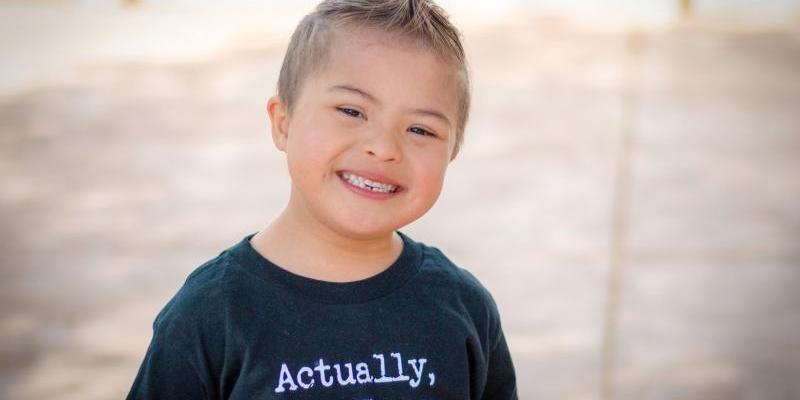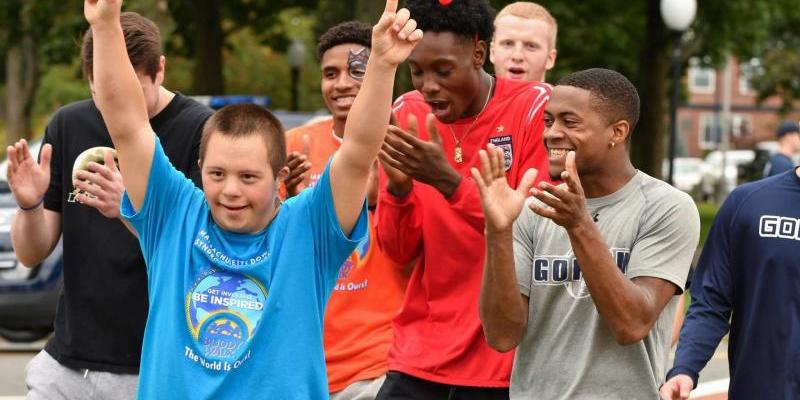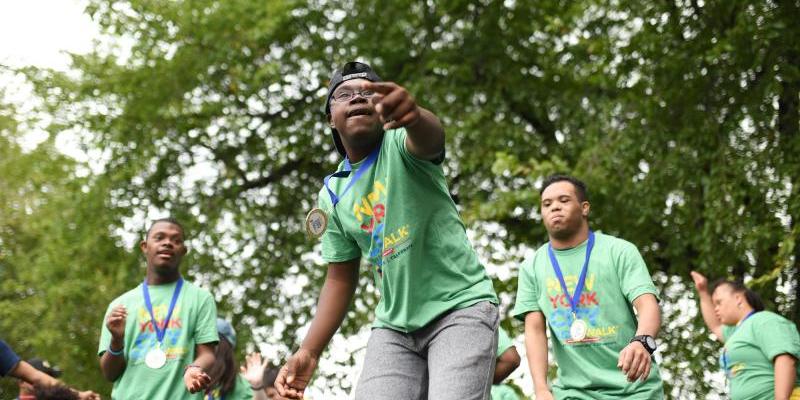
Physical Therapy
Physical therapists (PTs) are health professionals who work with individuals with Down syndrome to develop their gross motor skills. Because of certain physical characteristics, which include hypotonia (low muscle tone), ligamentous laxity (looseness of the ligaments that causes increased flexibility in the joints), and decreased strength, individuals with Down syndrome don’t always develop motor skills in the same way typically developing individuals do. They might find ways to compensate for the differences in their physical make-up, and some of the compensations can lead to long-term complications, such as pain in the feet or the development of an inefficient walking pattern.
The goal of physical therapy is to encourage the development of the best movement patterns. This means helping the person develop:
-
Good posture
-
Proper foot alignment
-
An efficient walking pattern
-
A physical foundation for exercise throughout life
Pediatric Physical Therapy
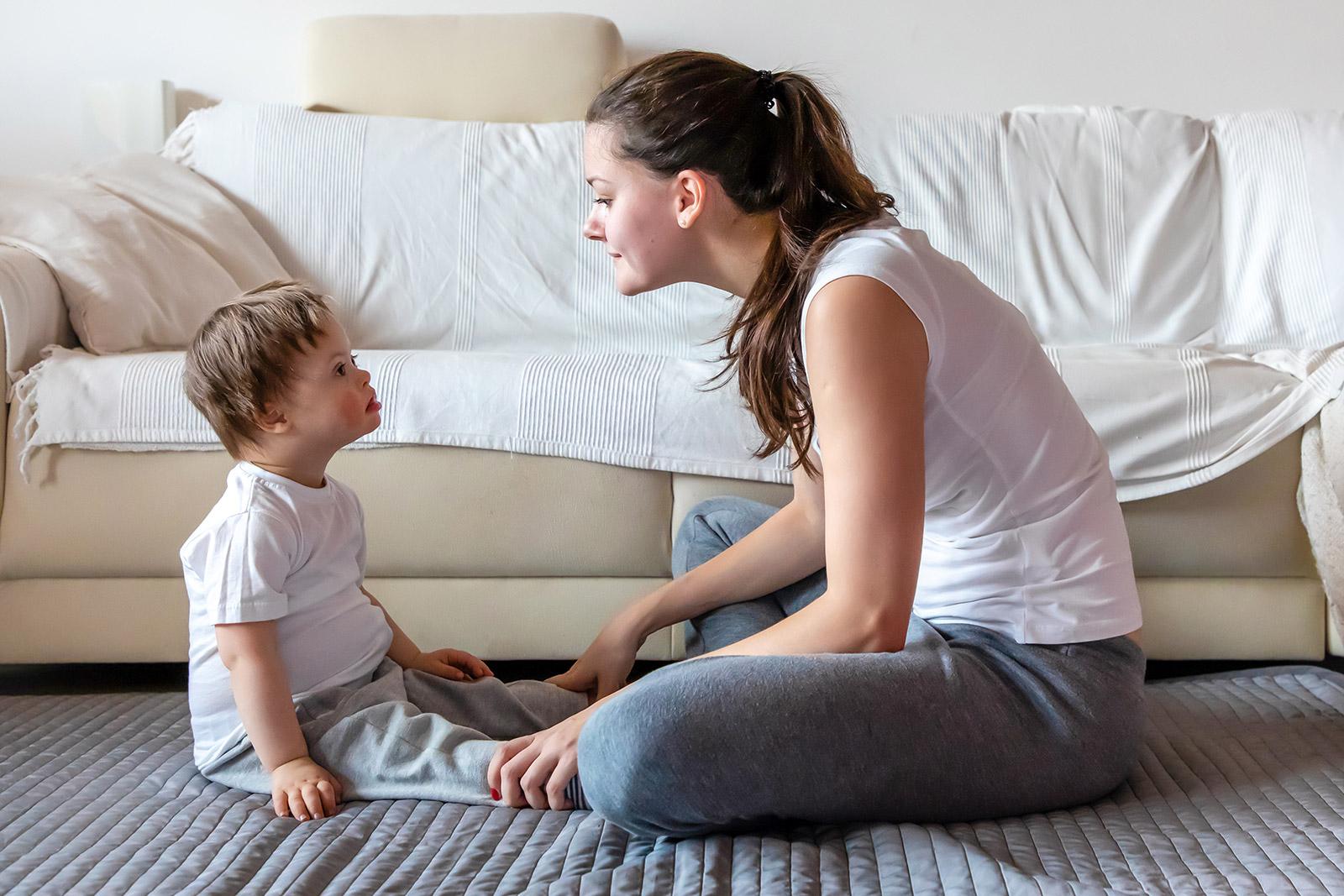
Children with Down syndrome often participate in physical therapy to learn and improve gross motor skills, or large body movements. In infancy this might include:
-
Rolling
-
Crawling
-
Sitting
-
Standing
-
Walking
These motor skills are the foundational skills needed for infants to explore their environments. Engaging in these will build strength in the muscles and give practice coordinating movements.
When children become toddlers and preschoolers, they continue to develop gross motor skills. These skills are important for participation at school, on the playground, and in physical education classes. They include:
-
Walking
-
Running
-
Skipping
-
Hopping
-
Climbing stairs
-
Maintaining balance
-
Playing sports
During a physical therapy visit, a physical therapist (PT) will observe what skills the individual has already mastered and then determine what they are ready to learn next. They will break the skill down into small parts and then practice the skill with a variety of strategies based on the individual’s learning style and physical abilities.
PTs also teach parents and caregivers how to practice skills with their loved ones. The practice of the skills can be added to the daily routine. Consistent practice and repetition will lead to mastery of the skill.
Adolescent and Adult Physical Therapy
As children continue to grow, participation in games during recess as well as sports become important for socialization and building friendships with peers. Even adults who no longer wish to participate in sports will need to maintain an exercise routine to stay healthy. A PT can help develop the most appropriate exercise plan for individuals with Down syndrome taking into account their current strength and fitness levels as well as reasonable goals.
NDSS thanks Patricia C. Winders, PT for assistance with this piece.
Occupational Therapy
Occupational therapists (OTs) are health professionals who work with individuals who have Down syndrome to improve their participation in everyday activities. OTs work with individuals across the lifespan to increase their independence in these activities. These everyday activities are a person’s “occupations” and include sleep, hygiene, dressing, cooking, self-feeding, employment, transportation, attending school, and toileting. Some individuals will be learning a skill for the first time (called habilitation) while others will be re-learning skills after an illness or injury (rehabilitation). OTs are also able to recommend accommodations or modifications to activities or the environment to improve the ability to participate in an occupation.
OTs can provide support in a variety of areas including:
-
Sensory processing challenges
-
Feeding challenges
-
Fine motor, gross motor, and coordination skills
-
Activities of daily living (ADLs) such as dressing, showering, sleeping, and toileting
-
School-based support
-
Employment skills
-
Healthy relationships and sexuality
-
Social skills
-
Mental Wellness support
-
Assistive technology
-
Adaptive equipment
Pediatric Occupational Therapy
OTs who work with children have education and training in child development, neurology, medical conditions, psychosocial development, and therapeutic techniques. Occupational therapists focus on the child’s ability to learn skills for independence.
These can include:
-
Self-care skills (feeding, dressing, grooming, hygiene)
-
Fine and gross motor skills
-
Skills related to school performance (e.g., printing, cutting, etc.)
-
Play and leisure skills
During infancy, health priorities relate to consistent growth and the development of basic motor milestones. At this stage an OT may become involved to help a child with:
-
Feeding problems: Due to hypotonia (low muscle tone) as well as the weakness and lack of coordination of the muscles of the cheeks, tongue, and lips, feeding can be difficult for some infants with Down syndrome. OTs help with positioning and feeding techniques for both breast and bottle feeding.
-
Reaching motor milestones: Sometimes OTs and physical therapists work together to help infants develop motor milestones (e.g., sitting, reaching, crawling, grasping, standing, walking). Other times, only one specialist will be involved.
A great amount of skill development happens when a child is a toddler and preschooler. They will likely develop the ability to move around their environment with less assistance. Children will learn how to interact with the many objects around them. An OT may become involved to:
-
Encourage the development of fine motor skills: Some children will need extra help to learn the hand and finger movements needed for picking up small items, holding a crayon or spoon, and completing a button.
-
Teach play skills: Children learn through play. During play, they open and close things, pick up and release toys of varying sizes and shapes, stack and build blocks, manipulate knobs and buttons, and scribble with crayons. Children who struggle with basic play skills might miss out on these important opportunities to learn.
-
Promote the beginning steps of self-help skills: An OT can break down activities into simple steps and suggest positioning or adaptations that might help the child be more independent. For example, a child may have more success feeding herself with a particular type of spoon and dish.
School-age children will need to adjust to new routines, increase independence in self-help and hygiene skills, learn classroom skills, and build friendships with their peers. OTs may help children this age to:
-
Improve fine motor skill development in the classroom: Many OTs work in the school system and provide interventions to help children learn handwriting, keyboarding, and cutting. They will also look at physical positioning for optimal performance (e.g., desk size) and assist with program adaptations based on the child’s physical abilities.
-
Develop self-help skills: An OT may be able to help a child to be successful in self-help skills including using the restroom, washing hands, putting on a coat, and zipping or buttoning clothing.
-
Address sensory needs: Sometimes a child engages in behaviors that may relate to their sensory development. For example, excessively putting non-food items in their mouth, having poor awareness of their body in space, using too much or too little force on objects, or not tolerating experiences like using glue or play dough.
An occupational therapist is one member of the team parents can rely on to provide professional assistance throughout the growth and development of their children.
In the US, OT services can be obtained through Early Childhood Intervention programs, public and private schools, and private therapists.
Adult Occupational Therapy
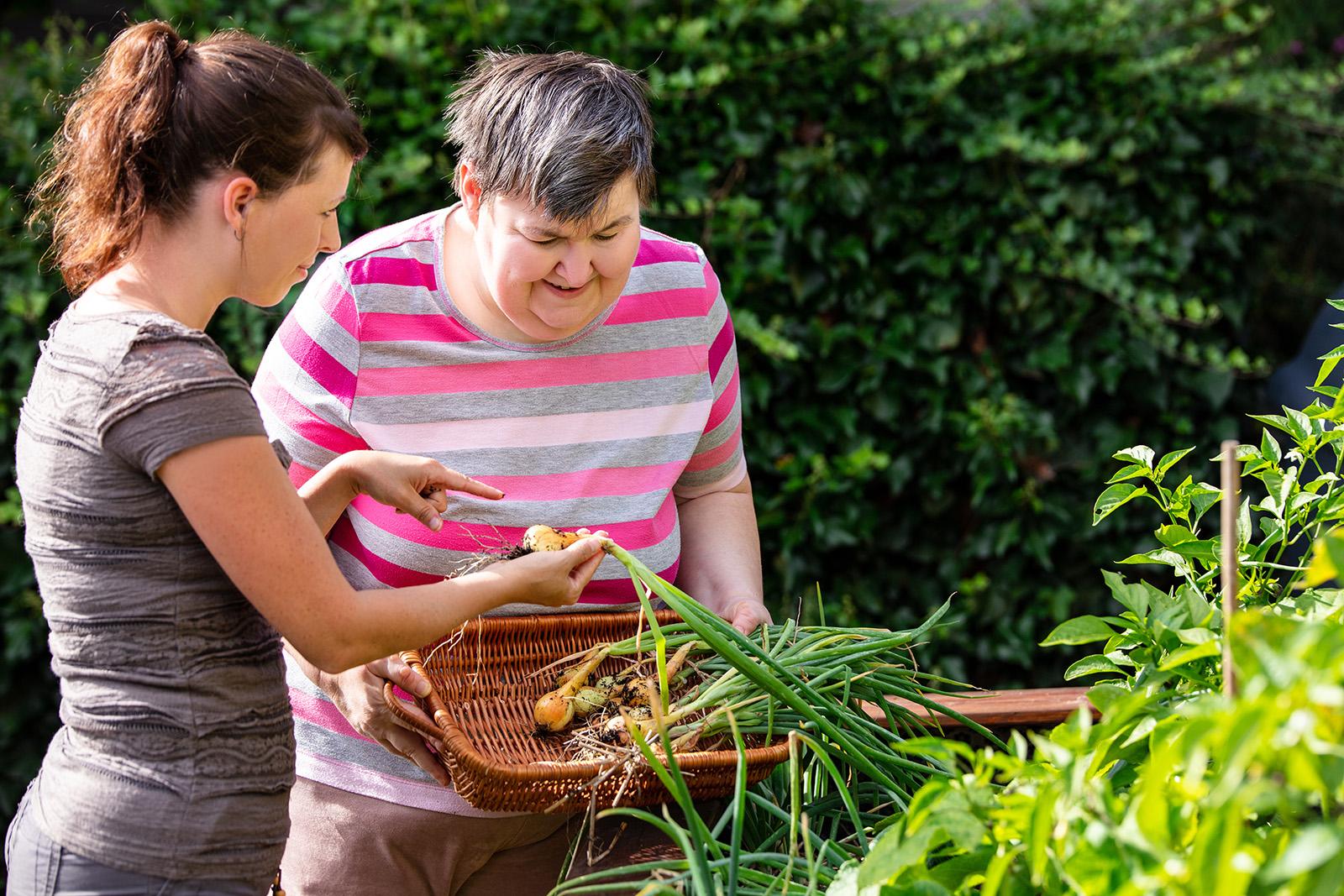
The need for occupational therapy doesn’t end when a child turns 21. Although it is less common for adults to receive occupational therapy, many individuals could still benefit from it.
According to Katie Frank, PhD, OTR/L at the Adult Down Syndrome Center in Illinois, you may want to consider consulting an OT for an adult with Down syndrome if:
-
You notice self-stimulatory behaviors (rocking, hand flapping, etc.).
-
Your loved one has strong preferences or sensitivities (to light, texture, taste, smell, sound, or movement).
-
Your loved one is a picky eater.
-
Your loved one has poor fine motor and coordination skills.
-
Your loved one is having difficulty completing basic activities of daily living (ADLs) such as dressing, showering, and toileting.
-
Your loved one is overweight.
-
Your loved one needs to learn job skills.
-
Your loved one has questions about healthy relationships and sexuality.
-
Your loved one needs to learn or practice appropriate social skills.
-
Your loved one has difficulty transitioning between activities.
-
Your loved one needs assistance establishing a routine.
-
Your loved one has anxiety about medical procedures, dental visits, haircuts, blood draws, or other activities that need to occur periodically.
***
NDSS thanks Maryanne Bruni, BSC OT(C) for assistance with this piece.
Citation:
Frank K. What is occupational therapy? Advocate Medical Group Adult Down Syndrome Center. https://adscresources.advocatehealth.com/what-is-occupational-therapy/. Accessed June 20, 2022.
Speech and Language Therapy
A speech and language pathologist (SLP) is a health professional who works with individuals with Down syndrome across the lifespan to develop and improve communication skills. Having Down syndrome is associated with significant delays and difficulties in spoken language. For this reason, an SLP is often included as a member of the healthcare team. SLPs can assist with the development of spoken language as well as with the use of augmentative and alternative communication.
Pediatric Speech and Language Pathology
Even before babies with Down syndrome begin to say their first words, there are many pre-speech and pre-language skills they can and should practice. These include:
-
The ability to imitate and echo sounds: Trying to copy sounds others make will help children learn to form verbal words.
-
Turn-taking: Important for participating in future conversations, turn-taking can be learned through games like “peek-a-boo”.
-
Visual skills: Making eye contact, looking at a speaker, and sharing attention to an object being discussed are all important to participating in conversations.
-
Auditory skills: Auditory skills include listening to speech and/or sounds for lengthening periods of time and can be practiced by listening to music.
-
Tactile skills: Children use their mouths to learn about the world around them. When children have safe objects to put in their mouths, it helps them become used to having varying textures in their mouths which will allow them to eat a wide variety of foods.
-
Oral motor skills: Controlling the muscles in and around the mouth, such as the tongue and lips, is important for articulating sounds during future speech.
-
Cognitive skills: Understanding goals of communication, such as letting someone know what you need or want, might help motivate young children to practice these skills.
-
Sign language: Prior to verbal language or in addition to it, sign language can be helpful in facilitating communication.
School-Age Speech and Language Therapy
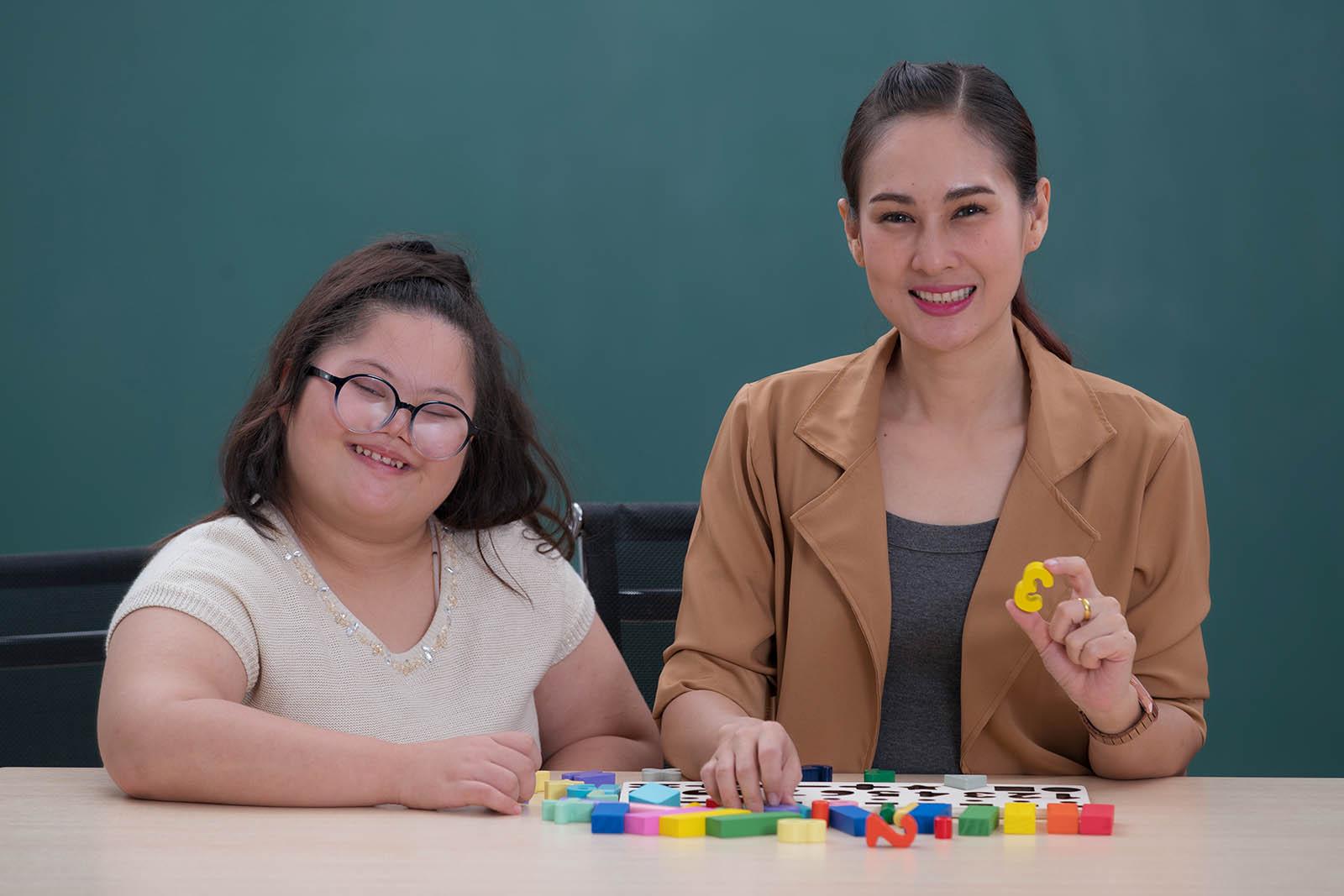
Once children begin preschool and school, SLPs will support the development of communication through:
-
Speech clarity: SLPs can provide interventions to improve the intelligibility of an individual’s speech through articulation, pacing, voice, and even grammar.
-
Vocabulary: Increasing the number of words a child understands can be done through play and reading stories and aids in both receptive and expressive communication.
-
Working memory: One deficit commonly found in individuals with Down syndrome is in the “phonological loop” which is a portion of memory that holds verbal information temporarily. This makes remembering multiple-step directions difficult as well as recalling the sounds and sequences of words.
-
Oral motor skills: SLPs will continue to monitor feeding, chewing, and drinking patterns.
-
Reading activities allow individuals who have strong visual memories to use that strength to develop vocabulary and grammar.
Similar to occupational therapy and physical therapy services, speech and language therapy is rarely seen in adults. However, there is emerging research suggesting speech and language skills can still be improved during the adult years.
Citation:
Buckley, S, and Le Prèvost, P. (2002) Speech and language therapy for children with Down syndrome. Down Syndrome News and Update, 2(2), 70-76. doi:10.3104/practice.171
Additional Resources
External Resources
-
Frank K. What is occupational therapy? Advocate Medical Group Adult Down Syndrome Center. https://adscresources.advocatehealth.com/what-is-occupational-therapy/. Accessed June 20, 2022.
-
American Physical Therapy Association
Locate a physical therapist and read specialized information on Down syndrome and physical therapy. -
“The Goal and Opportunity of Physical Therapy for Children with Down Syndrome.” Winders, Patricia C. (2001)Down Syndrome Quarterly 6(2), 1-4.
-
Gross Motor Skills in Children with Down Syndrome: A Guide for Parents and Professionals. Patricia C. Winders. Bethesda, MD: Woodbine House. (1997)
-
Fine Motor Skills for Children with Down Syndrome: A Guide for Parents and Professionals (Second Edition). Bruni, M. Bethesda, MD: Woodbine House. (2006)
-
Speech and Language Development and Intervention in Down Syndrome and Fragile X Syndrome. Joanne Roberts, PhD, Robin Chapman, PhD, Steven F. Warren, PhD, Marc E. Fey, PhD. Brookes Publishing. (2007)


